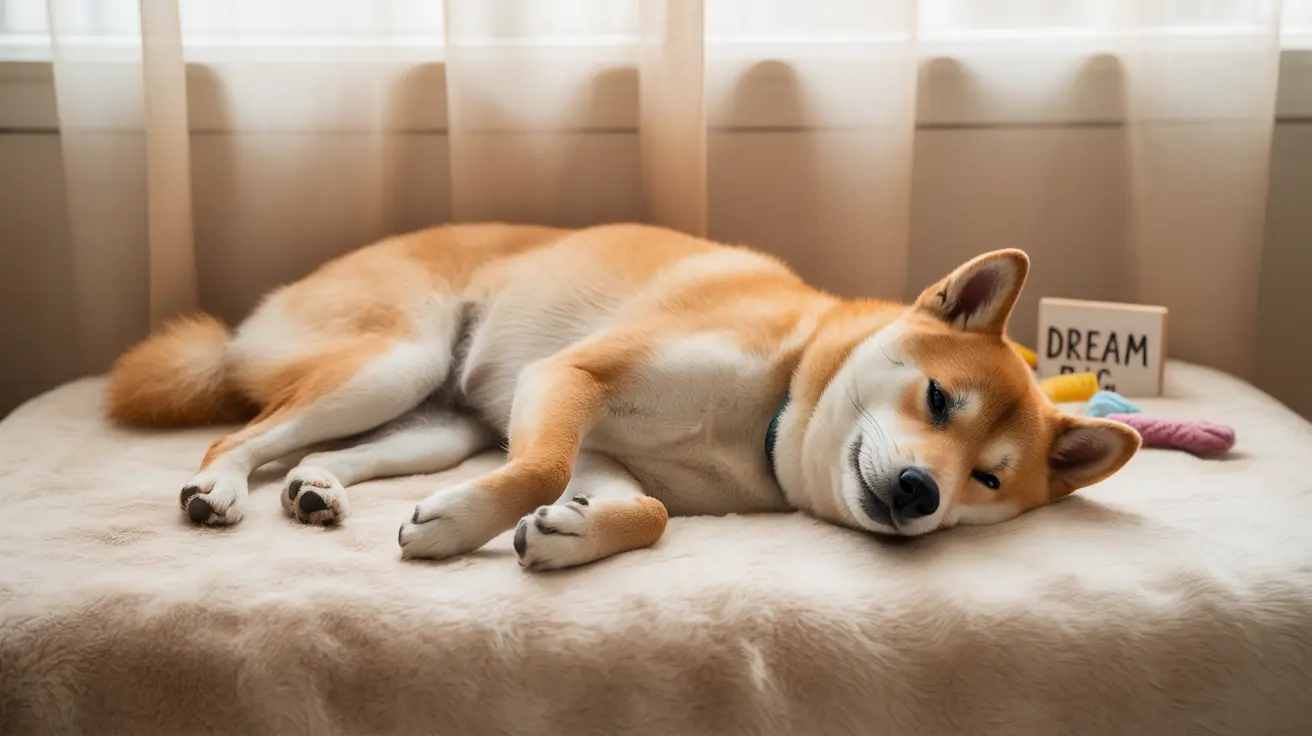The Science of Dog Dreams and Sleep Cycles
Dogs have remarkably similar sleep patterns to humans, experiencing both Slow Wave Sleep (SWS) and Rapid Eye Movement (REM) sleep. During REM sleep, which typically occurs every 90 minutes, dogs may twitch, whimper, or even appear to run in their sleep—clear signs that they're dreaming.
Research from prestigious institutions like Harvard Medical School suggests that dogs often dream about their daily activities and interactions with their owners. Interestingly, smaller dogs tend to dream more frequently but have shorter dreams, while larger breeds experience longer but fewer dreams.
Understanding Wet Dreams in Male Dogs
Wet dreams in dogs typically begin during sexual maturity, usually between 6-12 months of age. These involuntary emissions are controlled by the dog's sympathetic nervous system and are a natural part of their reproductive development.
Male dogs may experience these nocturnal emissions more frequently during adolescence, with the frequency often decreasing as they mature. Even neutered males might occasionally experience wet dreams, though typically less often than intact males.
Signs and Normal Behaviors
During or after a wet dream, you might notice:
- Clear to milky-white discharge where your dog sleeps
- Twitching or muscle movements during sleep
- Increased activity during REM sleep
- Normal awakening patterns
These signs are generally no cause for concern and are part of healthy canine development. However, any unusual discoloration, odor, or associated discomfort should be evaluated by a veterinarian.
Managing Your Dog's Sleep Environment
To support healthy sleep patterns and manage any evidence of wet dreams, consider:
- Providing a comfortable, washable bed
- Maintaining a quiet, temperature-controlled sleeping area
- Establishing regular cleaning routines
- Avoiding disturbing your dog during REM sleep
Frequently Asked Questions
Do male dogs really have wet dreams and what causes them?
Yes, male dogs do experience wet dreams, particularly during sexual maturity. These are caused by hormonal changes and the natural development of their reproductive system, triggered by brain activity during REM sleep.
At what age do dogs typically start having wet dreams during sexual maturity?
Dogs typically begin experiencing wet dreams between 6-12 months of age, coinciding with sexual maturity. However, the timing can vary, especially in larger breeds who may mature slightly later.
How can I tell if my dog's wet dream is normal or a sign of a health problem?
Normal wet dreams produce clear to milky-white discharge and shouldn't cause distress. If you notice discoloration, unusual odors, or signs of discomfort, consult your veterinarian as these could indicate health issues.
Why do dogs twitch or move their paws and legs while dreaming?
These movements occur during REM sleep when dogs are actively dreaming. The twitching represents their brain activity as they process daily experiences and memories in their dreams.
Can female dogs have wet dreams or similar nocturnal emissions?
Female dogs do not experience wet dreams in the same way males do, due to their different reproductive physiology. While they do dream, they don't have nocturnal emissions like male dogs.
Conclusion
Wet dreams are a normal part of male dog development and shouldn't cause concern for pet owners. By understanding these natural processes, you can better support your dog's health and development while ensuring they get the quality sleep they need for optimal wellbeing.
If you ever have concerns about your dog's sleep patterns or physical development, don't hesitate to consult with your veterinarian for professional guidance and peace of mind.






